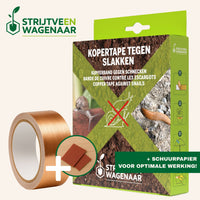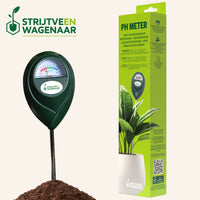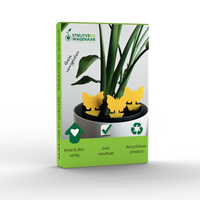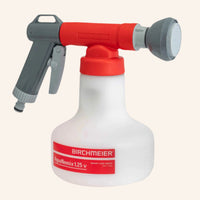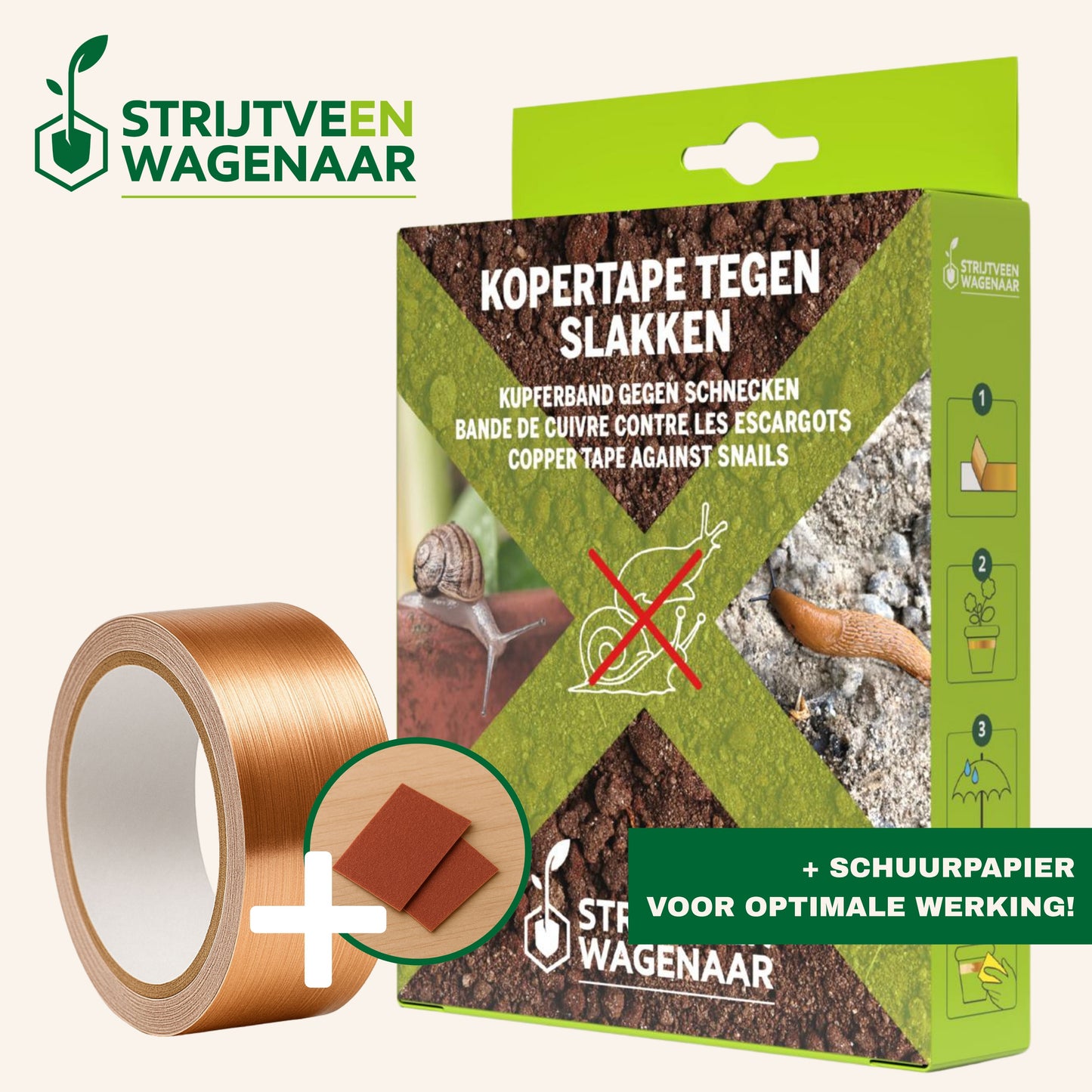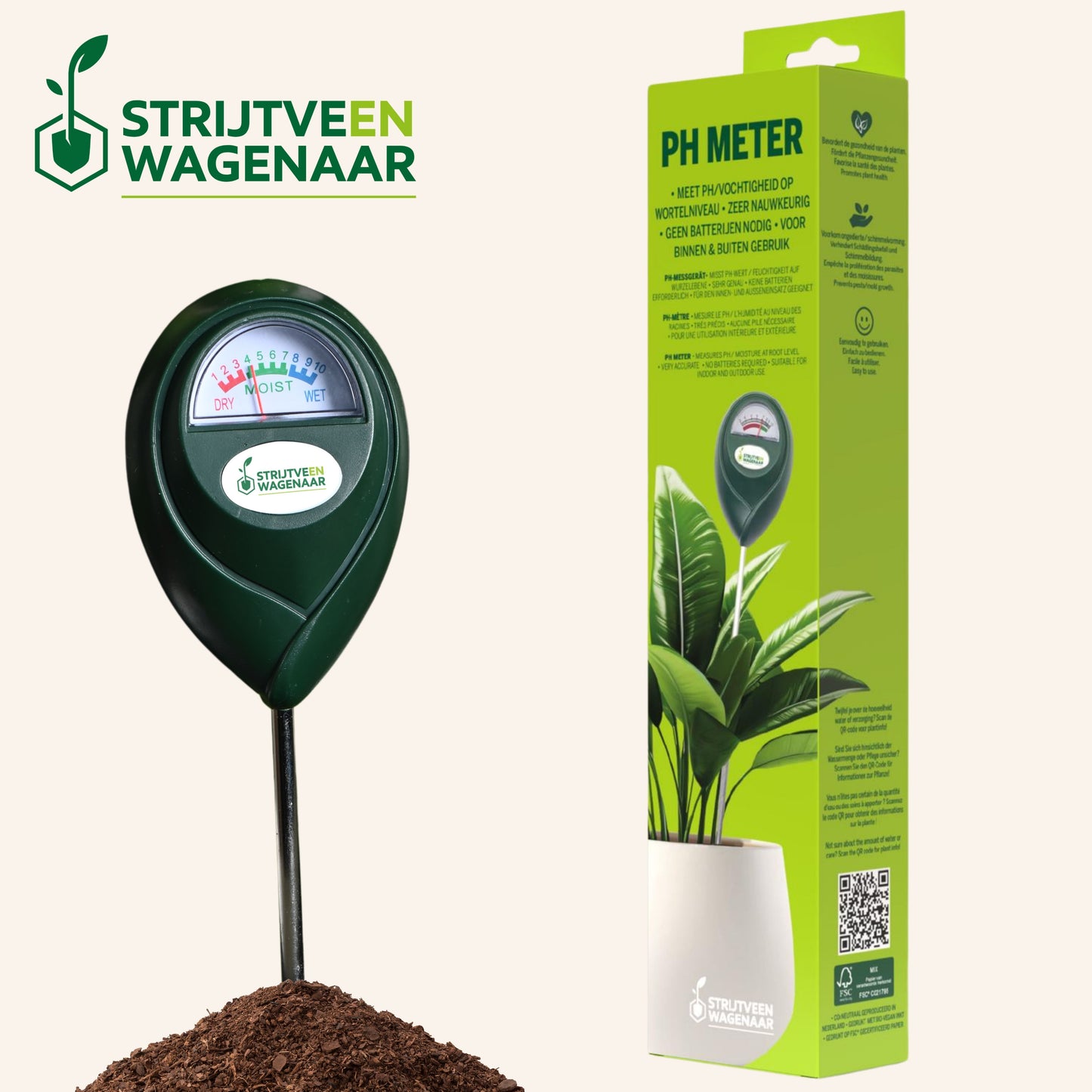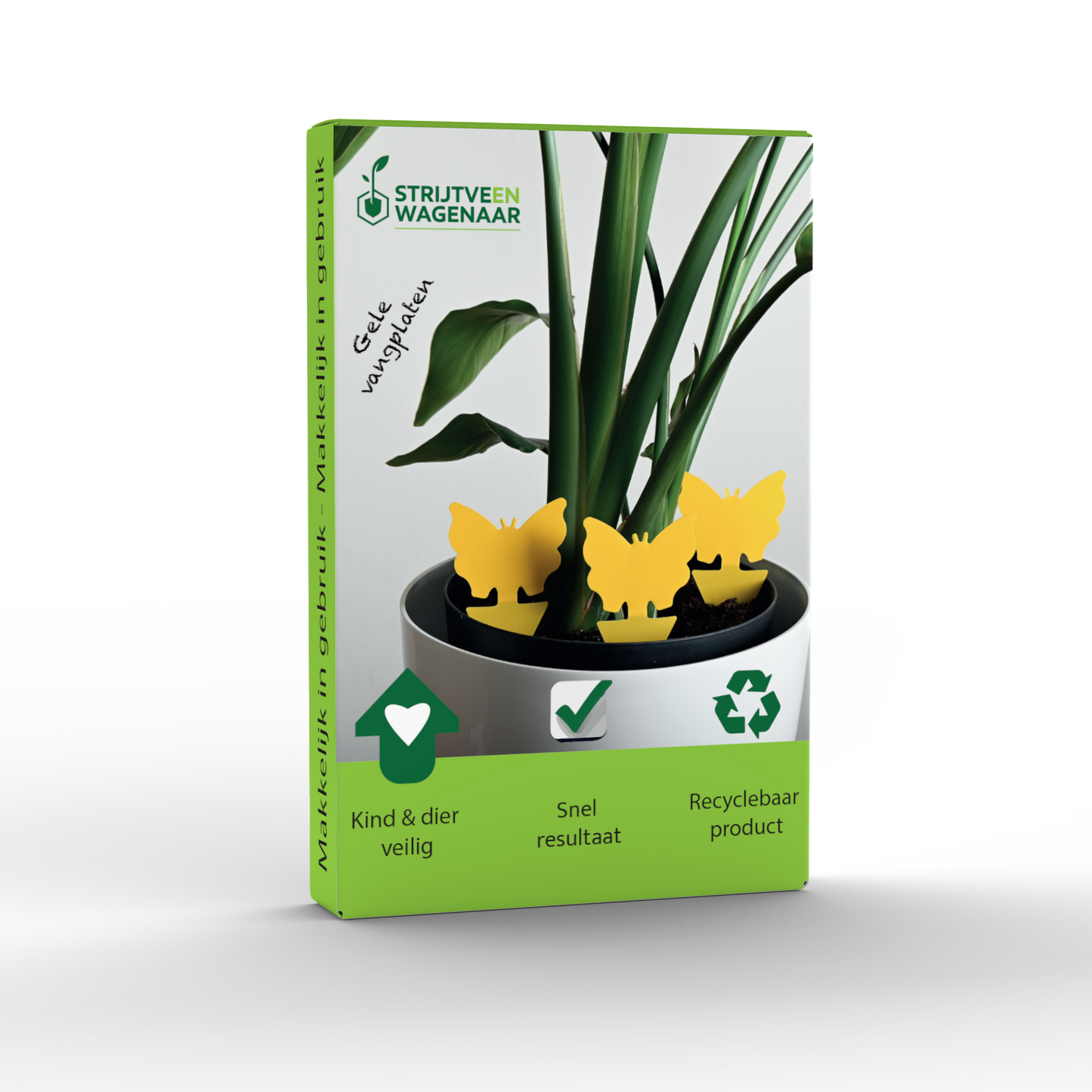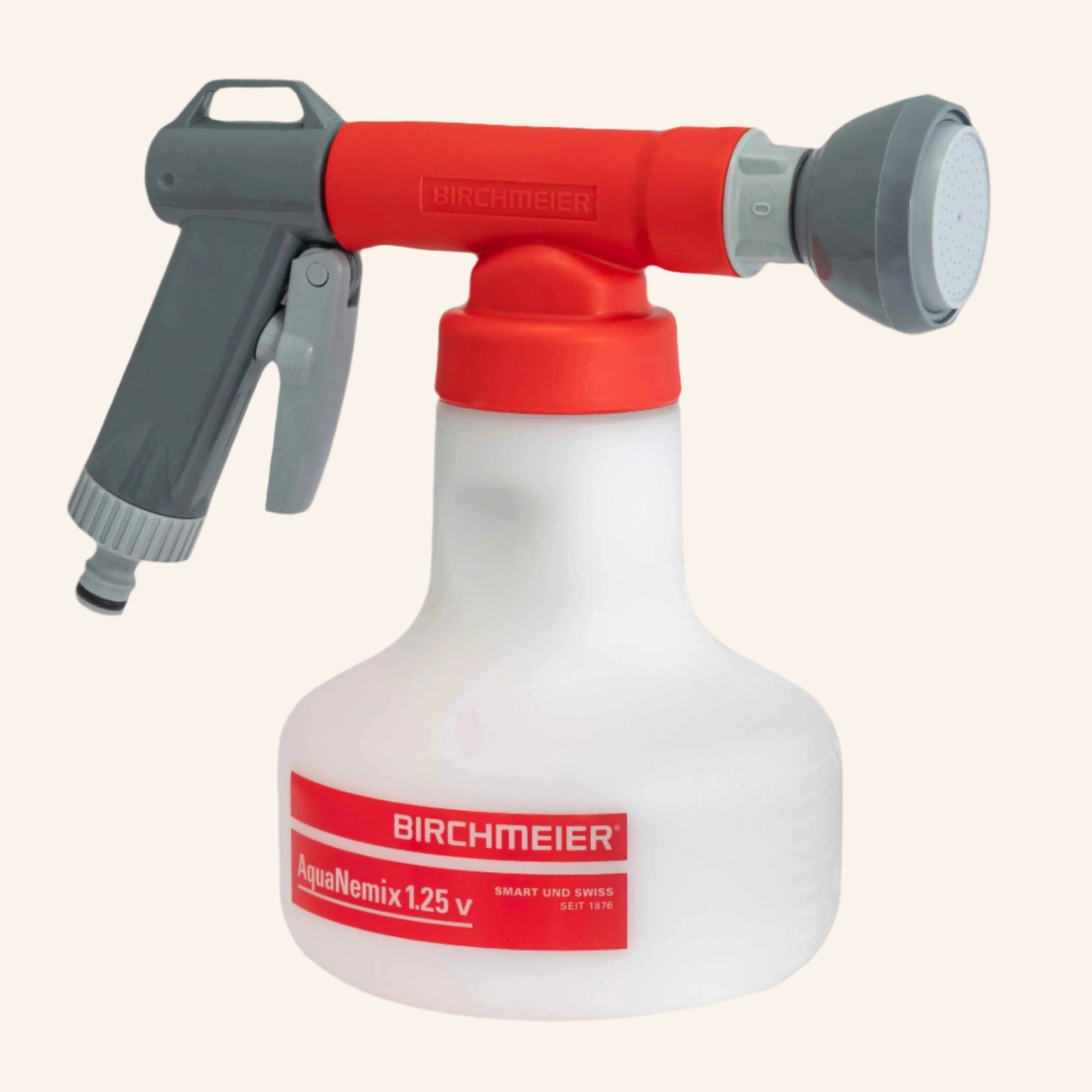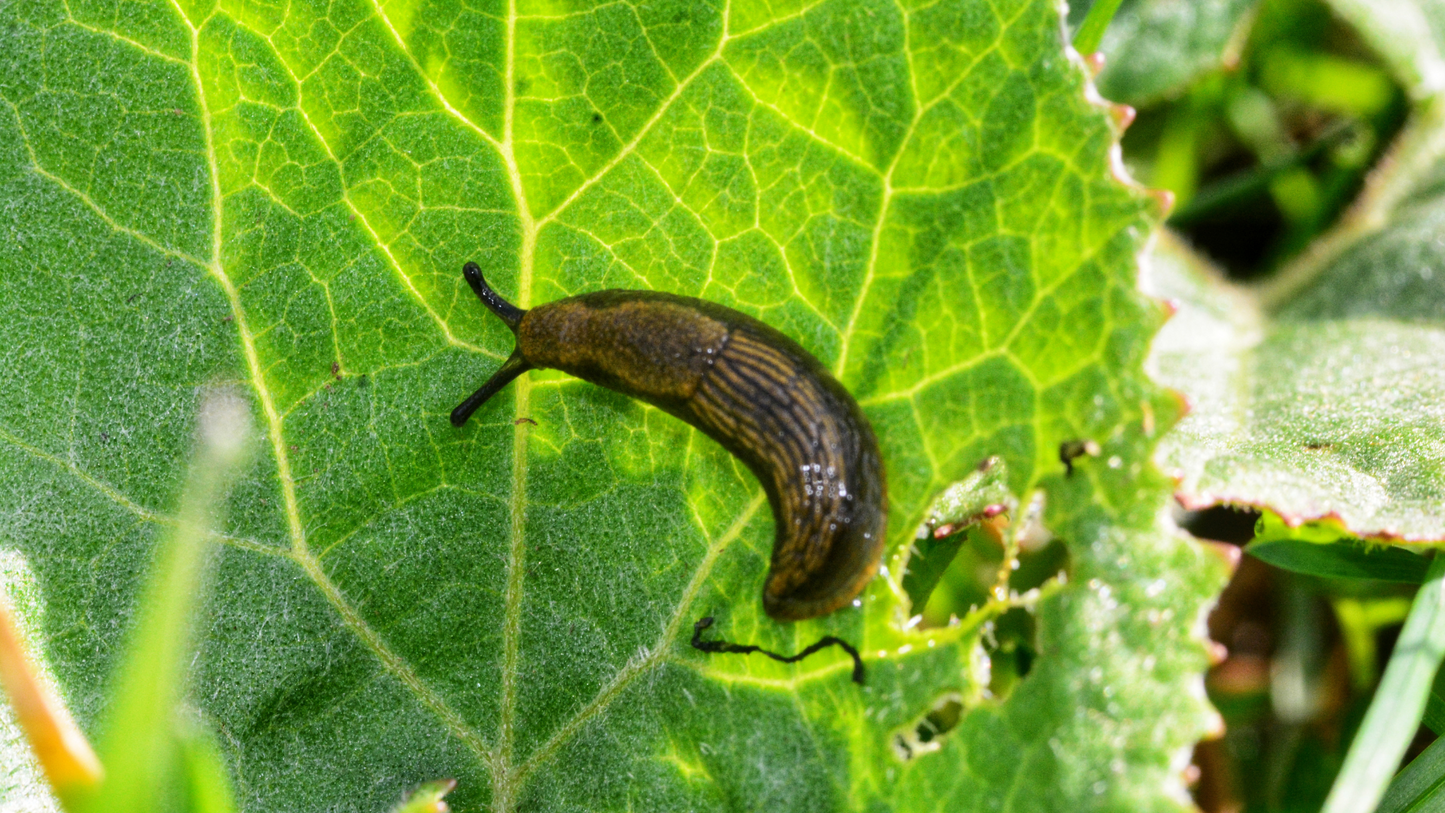
Slugs in your garden can be a real bummer. They easily eat young plants, leave slime trails on your flowers, and seem to suddenly appear en masse at night. What's more , slugs also reproduce rapidly . Fortunately, there are plenty of clever ways to deal with them. In this blog post, you'll learn how slug infestations develop, which plants to avoid, how to make your garden less attractive to slugs, and what to do if things get out of hand. With Grandma's tips, of course.
How do slug plagues occur in your garden?
Slugs love moisture, warmth, and shelter. They emerge mainly at night, lay hundreds of eggs per season, and can reproduce rapidly. Especially after rain or in spring, you suddenly see them everywhere.
Curious how long a slug actually lives? We explain it in our blog about the lifespan of slugs .
Do you have a lot of ground cover, loose plant debris, or shady spots in your garden? Then snails have an ideal habitat. If you also water every evening or have poor drainage, the fun is complete. Add succulent leaves to that, and you've created a snail paradise without even intending it to be.
How can you prevent slugs?
Prevention is always better than cure. By managing your garden wisely, you can significantly disrupt the slug environment. Here are a few things you can do to make your garden less attractive to slugs.
Keep the soil drier
Slugs love moist soil. Therefore, water preferably in the morning so the soil can dry out during the day. Also, ensure a well-draining soil structure with adequate drainage. A simple moisture meter will tell you exactly if you're overwatering.
Remove hiding places
Organic material like fallen leaves, branches, or mulch is perfect for protecting your garden plants, but also provides a hiding place for snails. Therefore, keep your garden tidy and regularly clear away loose plant debris.
Be careful with mulch
Mulch keeps the soil moist, but that also makes it attractive to snails. So use it sparingly and choose mulches that dry quickly, such as cocoa shells or pine needles . These also make it physically harder for snails to crawl through.
These plants help or not
Not every plant is equally attractive to slugs. Some species have succulent leaves that slugs love. Other plants are tough, fragrant, or irritating, and therefore usually leave them untouched. By choosing wisely, you can limit or even prevent damage.
Plants that attract slugs
- Hostas are real slug magnets because of their soft, wide leaves.
- Lettuce and endive are also popular: tender, juicy and easy to nibble on.
- Marigolds (Tagetes) are often used as a decoy plant, because snails are attracted to them in large numbers.
Plants that keep slugs away
- Lavender has a strong scent and tough leaves that snails don't like.
- Sage and thyme are spicy and dry in texture, which deters snails.
- Ferns and lady's mantle are less palatable due to their texture and are often left alone.
Grandma knows best: fighting snails
Time for the classics. Your grandma might not have had internet access, but she did know how to keep snails at bay. Here are her tried-and-true remedies.
Coffee grounds
Sprinkle some dried coffee grounds around your plants to repel slugs. They dislike the strong odor and the gritty texture beneath their slimy bodies. It's an easy way to create an unattractive barrier. Be sure to let the coffee grounds dry thoroughly before using them, otherwise you'll overwater the soil.
Sawdust or wood ash
Snails don't like crawling over sharp, dry materials. A border of sawdust or wood ash around your plants makes it much harder for them. You do need to reapply it after rain, though, because these products lose their effectiveness once they get wet.
Eggshells
Crushed eggshells are a classic snail deterrent. Their sharp edges create a natural barrier that snails prefer not to cross. Sprinkle them in a circle around vulnerable plants and replace them occasionally for a lasting effect.
Beer trap
A simple beer trap can work wonders. Bury a small bowl or cup level with the ground and fill it with beer. Slugs are attracted by the smell, fall in, and can't get out. Simple, effective, and a long-time favorite among vegetable gardeners.
Avoid evening spraying
Snails are primarily active at night and love humid conditions. Watering them in the evening makes them much more comfortable. It's better to water in the morning so the soil is drier by evening.
Make a plank fall
Place a wooden plank or tile in a damp spot in the garden. Snails like to hide under it during the day. Lift the plank in the morning and collect the snails. This is an easy way to keep the population under control.
Physical barriers against slugs
Besides scents and traps, you can also literally build a wall for snails. These simple, physical barriers work surprisingly well and are easy to make yourself.
Plastic bottles
You can easily transform an old plastic bottle into a snail collar. Cut off the bottom and place the top part around your plant like a collar. The smooth side of the bottle creates a physical barrier that snails can't crawl over. This is especially effective for young or vulnerable plants in the vegetable garden.
Vaseline
Snails don't like smooth surfaces. Applying a thin layer of Vaseline to the rims of your flowerpots or planters will literally make them slide off. They'll lose their grip and get snagged. You'll need to reapply it occasionally, especially after rain or intense sunshine.
Copper
Copper tape or a copper ring around your plant pots works surprisingly well. Upon contact with the copper, snails receive a mild electric shock. It's not painful, but annoying enough to cause them to turn around. An environmentally friendly and sustainable solution that you apply once.
Natural enemies of slugs
A healthy garden has its own balance. Slugs are prey for all sorts of animals, especially when they're still young. By making your garden attractive to their natural predators, you're helping nature. Read our tips for increased biodiversity .
Hedgehogs
Hedgehogs are true slug hunters. They prowl the garden at night and eat mainly young to medium-sized slugs. Provide a doorway in your fence and a cluttered area or hedgehog house to welcome them.
Toads and frogs
Toads, in particular, love young snails and snail eggs. Do you have a pond or a damp spot in your garden? Then these little helpers will quickly join the fun. Provide them with shady, cool hiding places among leaves or stones.
Ground beetles
Ground beetles and their larvae eat snail eggs and young snails. They prefer loose soil and plenty of ground cover. So leave some leaves or mulch around to make them feel at home.
Nematodes
Nematodes against slugs are microscopic creatures that you spread over the substrate with water. They penetrate young slugs and destroy them from the inside out. This method is natural, safe, and highly effective.
Summary: What helps against slugs?
Slugs love moisture, shelter, and juicy leaves. Keeping your garden drier and tidier can significantly deter them. Choose plants that repel slugs and attract their natural predators, such as hedgehogs and birds, to your garden. Want to target the larvae? Nematodes are a safe and effective solution. And don't forget Grandma's tricks, because sometimes a beer trap or some coffee grounds can make all the difference.
